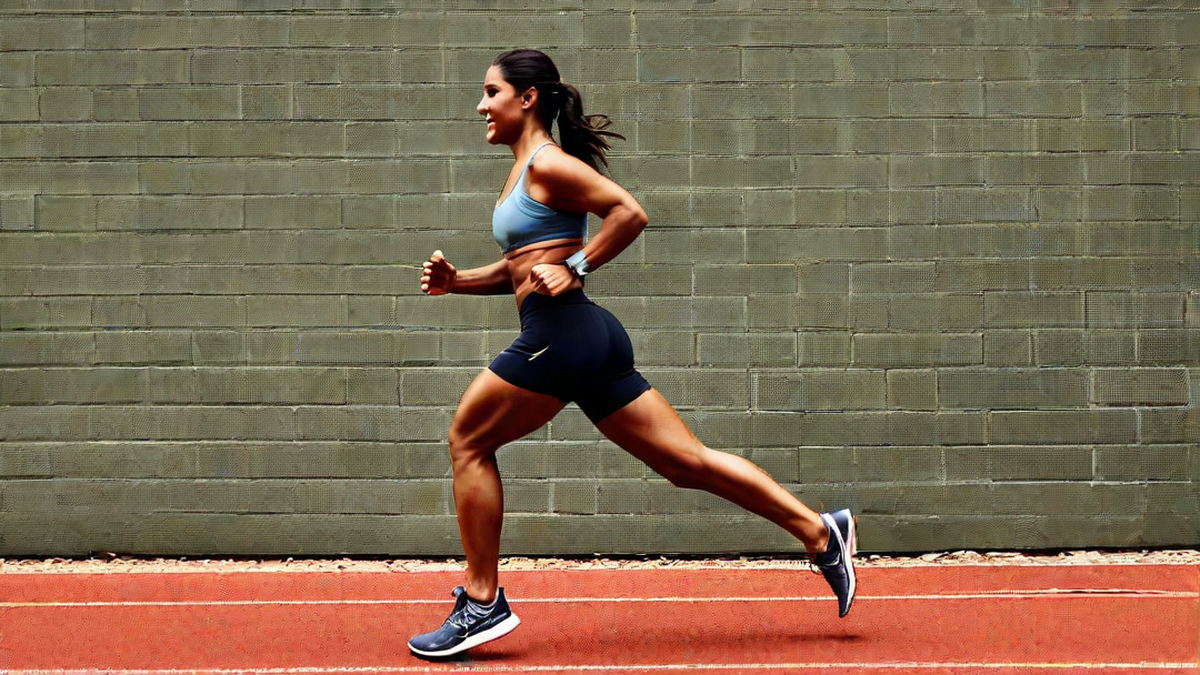As an experienced runner, I often find myself looking for ways to improve my performance and prevent injuries. One exercise that frequently comes up in discussions about running is squats. But do squats really help with running? Let’s delve into the topic and explore the benefits of adding squats to your running routine.
Why Squats?
Squats are a compound exercise that targets multiple muscle groups simultaneously, making them an excellent choice for runners. They primarily work the quadriceps, hamstrings, and gluteal muscles, which are essential for generating power and speed during running. By strengthening these muscles, you can improve your running form, increase your stride length, and ultimately enhance your running efficiency.
Additionally, squats are a weight-bearing exercise, meaning they put stress on your bones. This helps to increase bone density, which is crucial for runners, especially for those who engage in long-distance running. Stronger bones can reduce the risk of stress fractures and other common running-related injuries.
The Impact on Running Performance
When you run, your body relies on the muscles in your lower body to provide the necessary propulsion and stability. By incorporating squats into your training regimen, you can strengthen these muscles, enabling them to withstand the repetitive impact of running and maintain optimal performance over longer distances.
One of the primary benefits of squats for runners is the improvement in leg strength. Stronger quadriceps and hamstrings allow for more power during each stride, enabling you to maintain faster speeds and push through difficult terrains. Additionally, strong gluteal muscles provide stability and help prevent injuries, such as IT band syndrome or knee pain, which can be common among runners.
Furthermore, squats also engage the core muscles, including the abdominals and lower back. A strong core is crucial for maintaining good posture and stability while running, especially during longer distances. With proper squat form, you can strengthen your core muscles, which in turn can improve your running technique and reduce the risk of lower back pain.
Incorporating Squats into Your Training
Now that we understand the benefits of squats for running, let’s talk about how to incorporate them into your training routine. It’s essential to prioritize proper form and gradually increase the intensity and weight as your strength improves.
Here’s a simple squat routine to get you started:
- Begin with bodyweight squats: Stand with your feet shoulder-width apart, slowly lower yourself into a squat position, keeping your chest up and your knees in line with your toes. Repeat for 10-15 repetitions.
- Progress to weighted squats: Hold a dumbbell or a kettlebell in front of your chest, or use a barbell across your upper back. Perform 3-4 sets of 8-12 reps.
- Explore different squat variations: Once you have mastered the basic squat, you can incorporate variations such as goblet squats, sumo squats, or Bulgarian split squats to target specific muscle groups.
Always remember to warm up properly before performing squats or any exercises. It’s also crucial to listen to your body and rest when needed. Incorporating squats two to three times a week into your training routine can bring significant improvements to your running performance.
Conclusion
In conclusion, squats can be a valuable addition to any runner’s training routine. They help strengthen major muscle groups involved in running, improve leg strength and power, enhance running efficiency, and reduce the risk of injuries. By incorporating squats into your training, you can take your running to the next level and achieve your performance goals. So, lace-up your shoes, hit the squat rack, and enjoy the benefits of this fantastic exercise!

